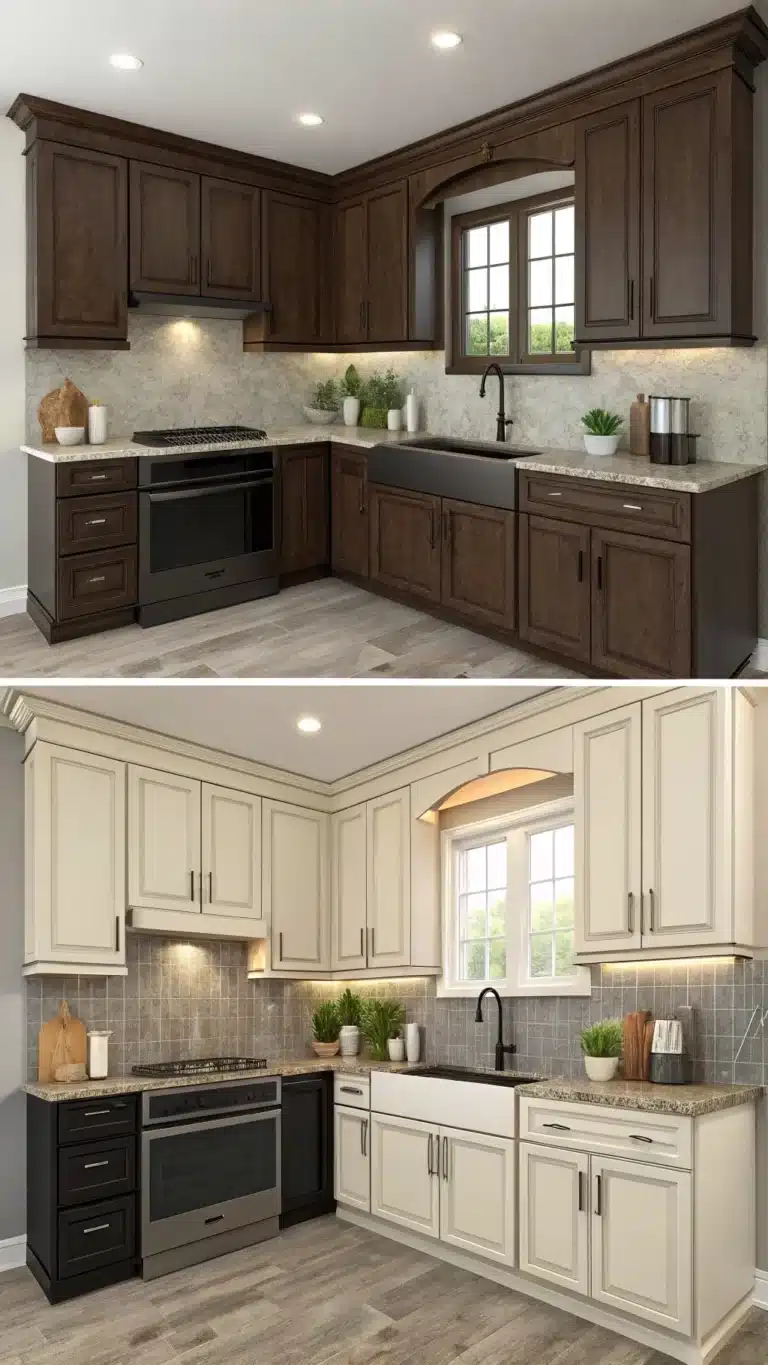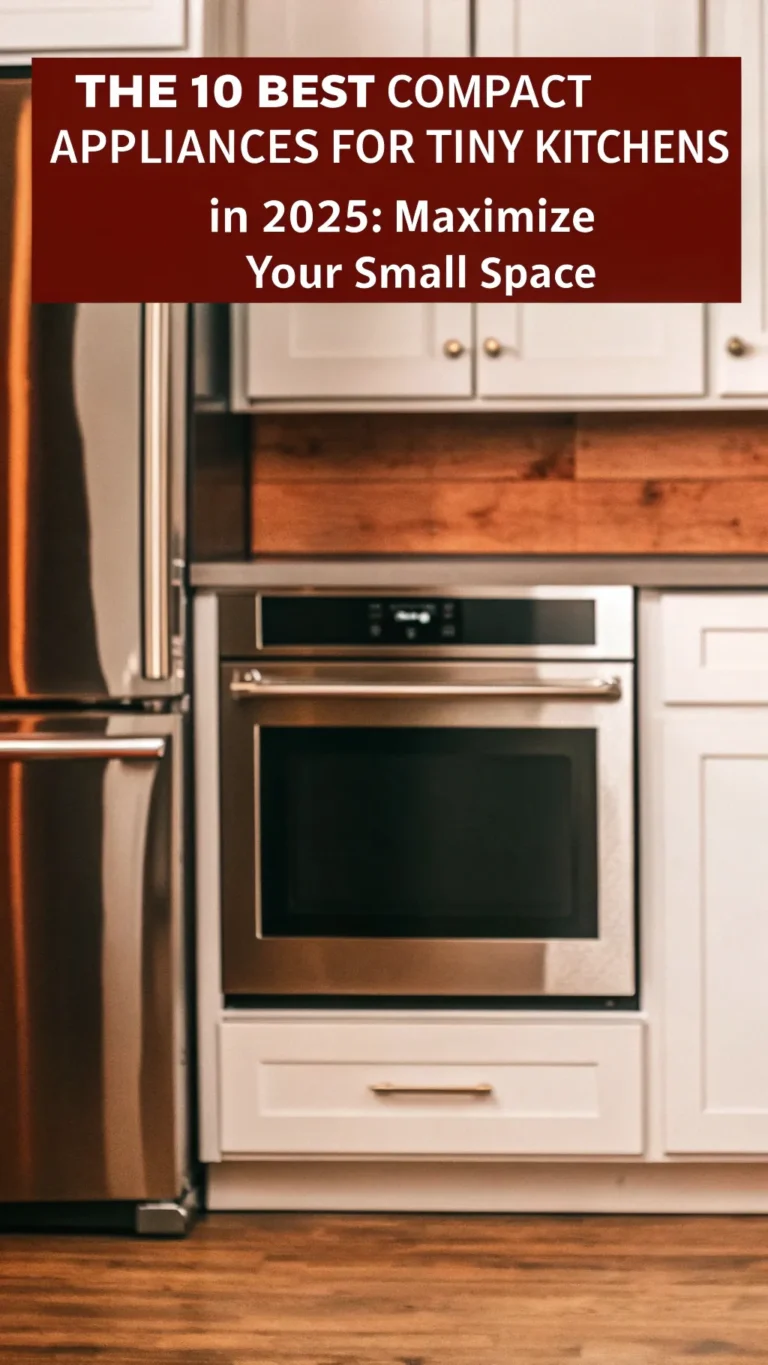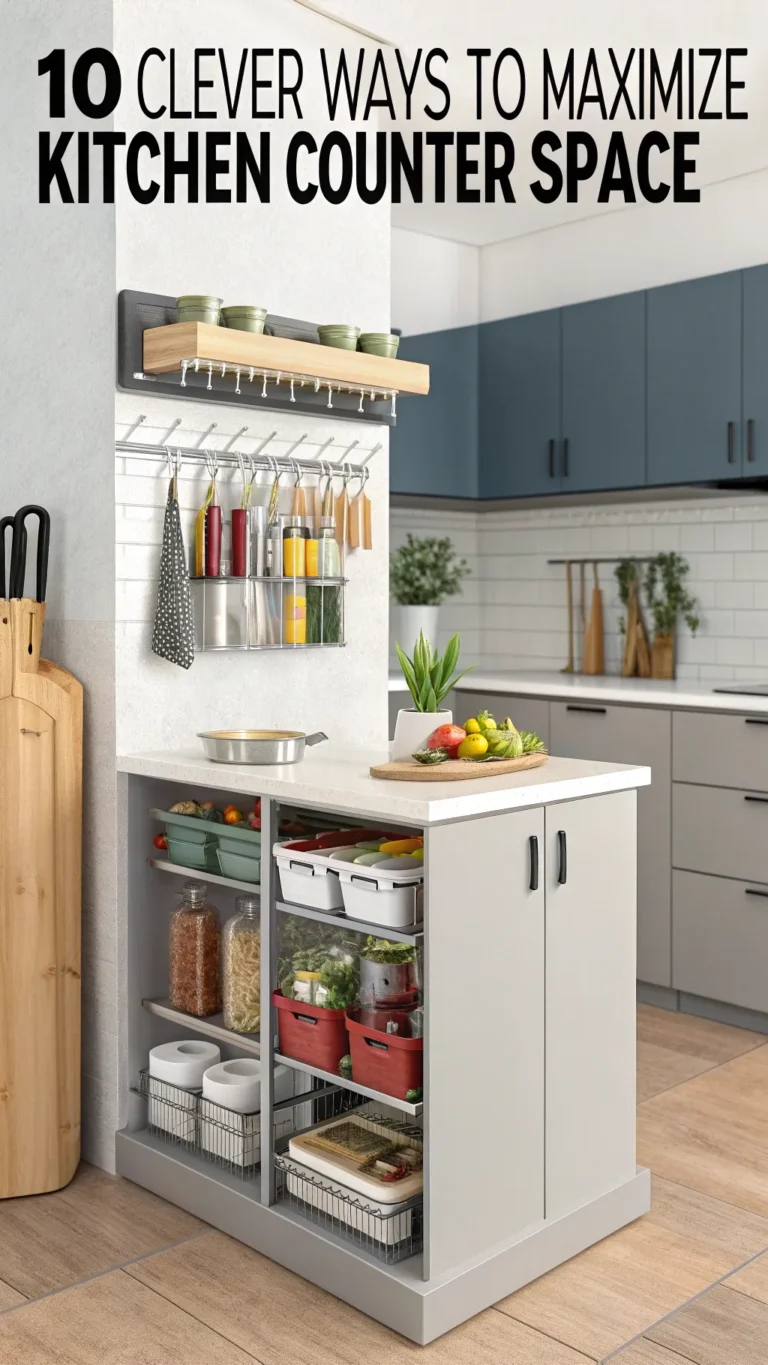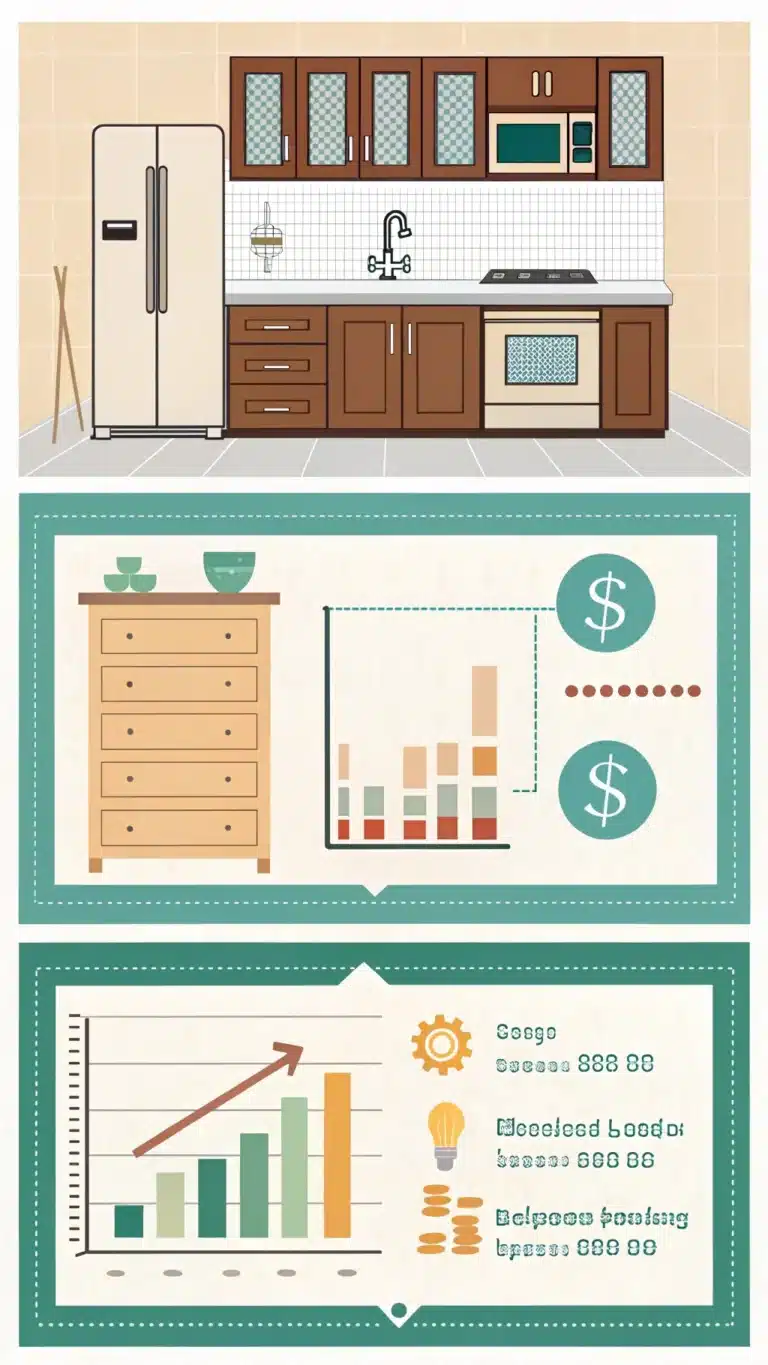Many people face the same challenge: limited space, especially for dining. The dream of hosting friends can feel crushed in cramped quarters. Small homes and apartments often lack a dedicated dining area. Traditional dining sets take up too much room. This makes eating together uncomfortable and inconvenient.
Space-saving dining solutions offer real hope. These clever designs let you enjoy meals without sacrificing valuable floor space. They blend style with functionality in small or open-plan homes.
This article offers 10 smart ideas. From flexible tables to creative seating and clever layouts, these solutions work in any space. Whether you have a tiny apartment or a cozy kitchen nook, you will find useful tips to create a dining spot that fits your needs.
We will cover foldable and extendable tables, bench seating, multi-functional furniture, and built-in seating options. You’ll learn pros, cons, best uses, and expert advice. Ready to make your dining area work better? Let’s explore smart solutions now.
Flexible Tables: The Masters of Disappearing Act
Tables that change shape help keep your space open. Flexible tables are among the best space-saving dining solutions. They adjust to your needs and clear away when not needed.
1. The Classic Drop-Leaf Table
A drop-leaf table has sides, or “leaves,” that fold down. This lets you shrink the table when you dine alone. When guests come, you open the leaves for more room.
Pros:
– Very versatile
– Can sit against a wall
– Offers a classic, stylish look
Cons:
– Limited seating with leaves down
– Mechanism quality varies
Ideal for: Kitchen corners, small dining rooms, studio apartments.
Experts note drop-leaf tables have kept their popularity due to their simplicity and charm. A 2023 survey by HomeFocus shows 58% of small-home owners prefer drop-leaf tables for their versatility.
2. Foldable & Wall-Mounted Tables
Some tables fold completely flat or hang on the wall. When not in use, they disappear. Wall-mounted tables flip down or slide out, making tight spaces functional.
Pros:
– Space almost clears entirely
– Affordable options exist
– Great for tiny studios or multipurpose rooms
Cons:
– Chairs need separate storage
– Wall installation required
– May feel less sturdy than fixed tables
Ideal for: Very small apartments, multi-use rooms, even hallways.
Interior designer Maria Jones says, “Wall-mounted tables work well when we need dinner spots that vanish during the day.”
3. The Extendable Dining Table
Extendable tables slide or open up to add seats. Some use a butterfly leaf (folds inside the table), removable leaves, or pull-out sections.
Pros:
– Flexible for guests
– Looks like a normal table when closed
– Multiple styles fit many decors
Cons:
– Leaves need storage
– Mechanism sometimes tricky
– Requires some floor space even when compact
Ideal for: Small dining rooms, open-plan living areas.
A 2024 report from Interior Trends showed a 20% rise in sales of extendable dining tables, evidencing their growing popularity.
4. Console-to-Dining Tables
Console tables double as dining tables. By pulling or unfolding, they transform from narrow console to full-size table. This solution uses little floor space.
Pros:
– Sleek, stylish when closed
– Great dual-function furniture
– Impressive transformations
Cons:
– Can be costly
– May be heavy to move
– Leaves/storage needed
Ideal for: Entryways, living rooms, behind sofas.
Design expert Liam Turner points out, “Console dining tables make small spaces multi-functional without clutter.”
Choosing a Flexible Table
Think about these before buying:
– How often will you use it?
– How many people sit regularly?
– Do you have room to extend or fold?
– Quality of folding or extending mechanism
– Material durability to last over time
Wood tables often add warmth, metal frames offer modern style and strength.
For materials tips, explore our article on Choosing the Right Dining Table Material.
Smart Seating: Tuck Away and Get Cozy
The table needs good seating. Clever chairs save space and add comfort. Pairing your table with the right seat can open your dining area.
5. Bench Seating (Standalone & Built-in)
Benches fit more people in less space. They tuck fully under tables, unlike bulky chairs. Built-in banquettes use corners well. They can have storage inside.
Pros:
– Space-efficient seating
– Cozier than chairs
– Built-ins offer hidden storage
Cons:
– Less back support
– Harder to get in/out middle seats
Ideal for: Dining nooks, walls, corners.
Benches have grown in popularity since 2022. A study by FurnishNow found 40% of homeowners install benches to maximize dining space.
6. Stackable or Nesting Chairs
Stackable chairs pile up when not in use. Nesting chairs slide under each other. Both save floor space when you need fewer seats.
Pros:
– Easy storage
– Variety of looks and materials
Cons:
– Comfort varies by design
– Storage space needed
Ideal for: Places needing occasional extra seating.
7. Stools That Tuck Completely Under
Backless stools slip under table aprons or counters. They offer seating without cluttering the floor visually.
Pros:
– Disappear when not used
– Very space-saving
Cons:
– No support for backs
– Not for long sitting periods
Ideal for: Kitchen counters, small tables.
8. Ottomans with Trays
Ottomans work as footrests, extra seating, or temporary tables. Adding a tray turns one into a sturdy surface for plates.
Pros:
– Multi-use seating
– Often includes storage
– Stylish and comfortable
Cons:
– Not ideal for formal dining
– Needs a steady tray for dining
Ideal for: Living rooms needing flexible setups.
Seating expert Hannah Lee advises, “Ottomans blend casual comfort with dining function perfectly in limited areas.”
Consider comfort and style when picking seats. Ease of moving or storing chairs also matters. For storage ideas, see our guide to Best Storage Ottomans for Small Spaces.
Integrated & Clever Concepts: Beyond the Traditional Setup
Dining does not need only furniture. Some solutions use your home’s layout or structure cleverly. These smart small apartment dining ideas fit hidden or built-in spaces.
9. Counter Height Dining & Kitchen Island Extensions
An existing kitchen island can become a dining spot. By adding an overhang for stools, you create casual seating.
Pros:
– Uses current space
– Casual, social area
– Integrates kitchen and dining
Cons:
– Requires stools
– Not formal dining
– Fixed location
Ideal for: Kitchens, open living plans.
10. Built-in Banquettes with Storage
Built-in seats fit corners or window bays. Storage compartments beneath seats hide clutter. This creates a cozy dining nook.
Pros:
– Maximizes unused corners
– Hidden storage
– Inviting atmosphere
Cons:
– Fixed installation
– Can be costly
– Less flexible than chairs
Ideal for: Tight dining areas, kitchens.
Other Clever Concepts
- Console Tables behind Sofas: Serves as narrow dining or workspace with stools.
- Strategic Layout & Zone Creation: Use rugs and lighting to define eating spaces visually.
Such planning helps dining zones feel separate without walls.
What About Planning?
- Measure space accurately
- Think through traffic flow
- Position lighting over dining
For ideas on banquettes or kitchen islands, check out our tutorials and guides like DIY Built-in Banquette Bench Tutorial.
Designing Your Space-Saving Dining Area: Style, Storage & What’s Next
Putting your dining ideas together matters. Style, practicality, and storage combine for success.
Choosing Solutions That Fit You
Ask yourself:
– How many dine here usually?
– How often host guests?
– What budget can I set?
– What style matches my home?
– Have I measured my space?
Blend with Your Decor
Match materials to match your style. Wood pairs with warm, natural interiors. Metals suit modern looks. Use color and lighting to zone your dining area.
Storage Ideas
Storage near dining helps avoid clutter. Buffets, sideboards, or wall shelves keep essentials close. Vertical shelving uses wall space well.
Budgeting
DIY projects can save money but need effort. Pre-made furniture often ensures quality mechanisms and materials. Think long-term durability.
Trends for 2025
- More sustainable materials: bamboo, reclaimed wood
- Modular furniture for flexibility
- Hidden tech features like charging ports
- Focus on comfort in small-scale designs
Designers encourage plan-making. Drawing floor plans and testing furniture helps avoid mistakes.
Explore current styles with Architectural Digest’s small space dining trends for inspiration.
Frequently Asked Questions About Space-Saving Dining
What’s the best dining table for a tiny apartment?
Foldable or wall-mounted tables often work best. Console-to-dining tables add multi-functional value. They fit tight spaces nicely.
How can I add seating without taking up much floor space?
Choose bench seating that tucks under tables. Stackable chairs or stools also save space.
Can I create a dining area in a living room?
Yes. Use multi-functional furniture or define areas with rugs and lighting.
Are extendable dining tables durable?
Durability depends on materials and mechanism quality. Choose sturdy frames and smooth extensions.
How do I make a small dining area feel bigger?
Use mirrors, light colors, and slim furniture. Choose tables like drop-leaf or wall-mounted to reduce clutter.
Finding Your Perfect Space-Saving Dining Solution
Limited space should not stop you from enjoying dining at home. Flexible tables, smart seating, and clever integrated ideas help you dine comfortably. A small area can transform with the right choices.
Take time to assess your space and lifestyle. Pick solutions that suit your needs and style. Mix functionality with comfort for the best results.
Share your favorite space-saving tips in the comments below. Dive into related topics like Choosing the Right Dining Table Material or Best Storage Ottomans for Small Spaces. Sign up for our newsletter to get new ideas for living well in small spaces.
Creativity and smart design turn any room into a welcoming dining spot. Your perfect space-saving dining solution awaits.






